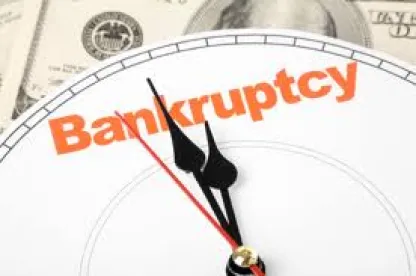On March 27, 2020, the $2 trillion economic stimulus package known as the Coronavirus Aid, Relief, and Economic Security Act (CARES Act) was signed into law. The CARES Act includes several bankruptcy-related provisions which address individual consumer bankruptcy cases. Additionally, one important provision expands bankruptcy relief for small businesses by temporarily increasing the debt limit eligibility threshold of the new Subchapter V of Chapter 11, from $2,725,625 to $7,500,000. By increasing this threshold, many more American businesses will now be eligible to elect the “small business case” process in Chapter 11 bankruptcy. The “small business case” process is expected to be faster and less expensive.
The bipartisan Small Business Reorganization Act of 2019 (SBRA) only recently went into effect as of Feb. 19, 2020, creating the small business case process under Subchapter V. The purpose of the SBRA is “to streamline the process by which small business debtors reorganize and rehabilitate their financial affairs.” Chapter 11 bankruptcy reorganizations have long been viewed as expensive and lengthy, with only a quarter of cases achieving successful reorganization. The burdens of Chapter 11 are especially great for smaller businesses. The SBRA enables a small business debtor to elect to proceed as a “small business case,” rather than follow the traditional Chapter 11 process.
The small business case process is distinguishable from Chapter 11 as follows:
-
Unlike a Chapter 11 case in which a debtor’s expenses can be increased by quarterly fees paid to the U.S. Trustee, attorneys’ fees and expenses paid to counsel for a creditors’ committee, and preparation and approval of a disclosure statement, under the SBRA, a small business case eliminates many of these burdens:
-
No committee of unsecured creditors is appointed in a small business case
-
No disclosure statement
-
Only the debtor can file a plan
-
No quarterly U.S. Trustee fees
-
-
Lengthy Chapter 11 cases can increase a debtor’s expenses and impact operations. The SBRA aims to reduce time spent in bankruptcy:
-
A trustee is appointed, but the debtor remains in possession of assets and in control of the business
-
The appointed trustee’s role is to monitor the case, facilitate a consensual plan and make distributions under a nonconsensual plan
-
The court holds an early case status conference (within 60 days of filing) “to further the expeditious and economical resolution” of the case, and the debtor must file a report on efforts to achieve a consensual plan
-
A reorganization plan must be filed within 90 days
-
If the court confirms a consensual plan, the debtor receives a discharge upon confirmation
-
If the court confirms a nonconsensual plan, the debtor receives a discharge after completing plan payments for 3-5 years. (The standard for confirming a nonconsensual plan is by determining “can the debtor cash flow the business.”)
-



 />i
/>i

